
It’s a wild, wild west out there in the tech world. With the acceleration of technological change, a host of technological innovations are on the horizon. But, what’s also expected is a substantial increase in malware disruption, with malicious hackers working unremittingly for finding new loopholes.
Don’t take our word for it.
“Nearly 80% of senior IT and IT security leaders believe their organizations lack sufficient protection against cyberattacks despite increased IT security investments made in 2020 to deal with distributed IT and work-from-home challenges, according to a new IDG Research Services survey commissioned by Insight Enterprises. Just 57% conducted a data security risk assessment in 2020,” says the author in this piece from Forbes.
Now, while there are a ton of good antivirus programs out there that can help you stay protected, this post isn’t about them.
Here, we’d instead like to focus on Microsoft Defender, the default security solution provided by Microsoft for all your security woes.
Let’s dive right in.
What is Windows Defender
Microsoft Defender, called Windows Security since Windows 11, is the default anti-malware software offered by Microsoft, free of charge. And don’t get fooled by the free option; the software can hold its own against any paid antivirus program. It can detect and remove viruses, worms, and malware easily.
Apart from all around protection, right from moment you start your PC, it also downloads updates automatically to keep up with the fast changing tech updates. Also, keep in mind if you have already installed a third-party antivirus on your PC, then the Microsoft Defender will be turned off. To turn it back on, all you have to do is uninstall the antivirus.
Scan your PC with Windows Defender
With the help of Windows Defender, you can easily scan specific files and folders on your PC, and make sure everything’s work good under the hood. To get started, follow the steps below:
- Choose a file or a folder you’d like to scan.
- Right-click on that item and select Scan with Microsoft Defender.
When the scan gets completed, you’ll see a Scan options page which will tell you the results of the scan. If there’s any threat that needs your attention, it will be pointed out by Microsoft Defender.
Turn on Automatic Protection
Apart from malware detection and dealing function, the Windows Defender antivirus also offers a way to enable real-time protection for your PC. Enable it, and you’ll be notified as soon as something strange happens with your computer.
To get started, follow the steps below:
- Press Windows key + I to open Settings.
- Select Privacy & security > Windows Security > Virus & threat protection.
- From there, select Manage settings (or Virus & threat protection settings in early versions of Windows 10) and switch Real-time protection option to On.
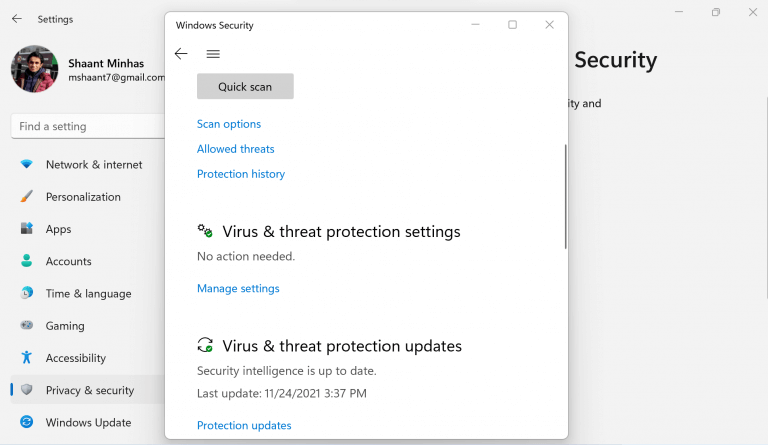
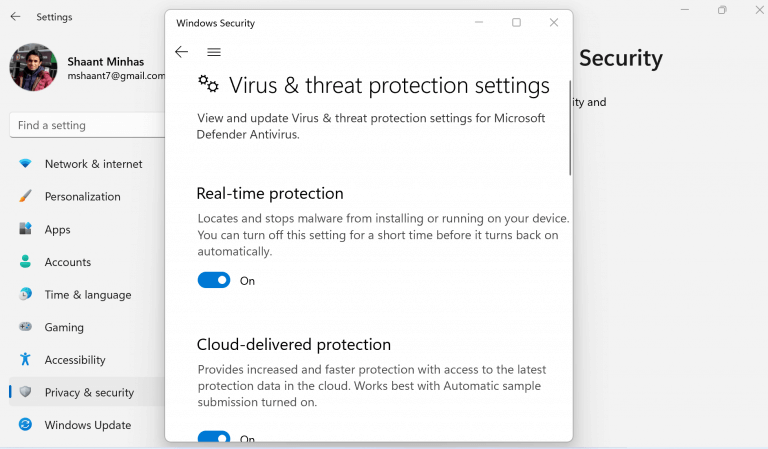
This will turn on the all-around protection feature of Windows Defender, making it immune to obscure bugs and threats.
Scan the whole PC
In the first section above, we covered how you can scan specific files and folders. However, with Windows Defender, you can also run a complete scan of your PC.
This feature to scan comes in two varieties: quick scan and advanced scan.
Running a quick scan
You feel there’s something off with your PC, but you’re short on time. So, what do you do? With the quick scan feature, Windows Defender will only go over the essential files and registry of your computer. Any problems that it finds will be resolved then and there by the app.
Follow the steps below to run the scan:
- Go to Settings > Privacy & security > Windows Security.
- Click on Virus & threat protection.
- Select Quick scan to get started with the process.
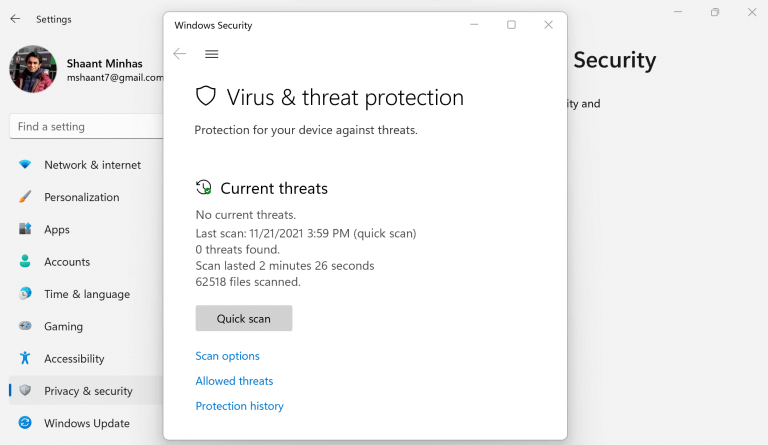
Run an advanced scan
As good as the quick scan feature is, it doesn’t do full justice to a standard security check-up against malware attacks. To make sure your computer is really free from any malware and virus intrusions, we’d recommend you give the advanced scan a go.
To get started, follow the steps below:
- Select Start > Settings > Privacy & security > Windows Security.
- Click on Virus & threat protection.
- Under Current threats, select Scan options (or in early versions of Windows 10, under Threat history, select Run a new advanced scan).
- Select one of the scan options:
- Full scan (check files and programs currently running on your device)
- Custom scan (scan specific files or folders)
- Microsoft Defender Offline scan
- Finally, click on Scan now.
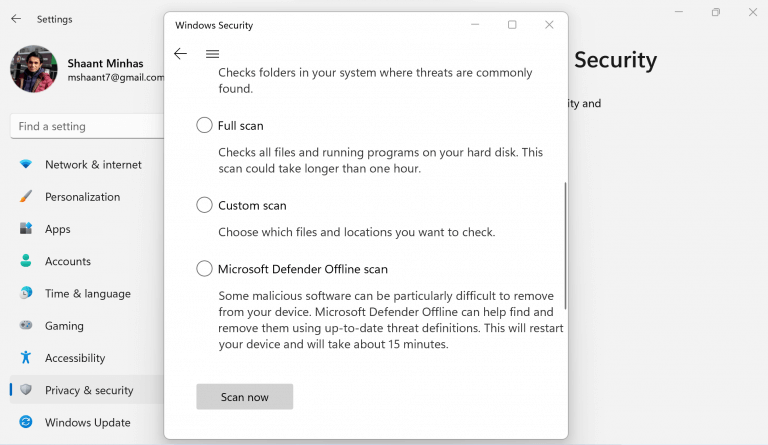
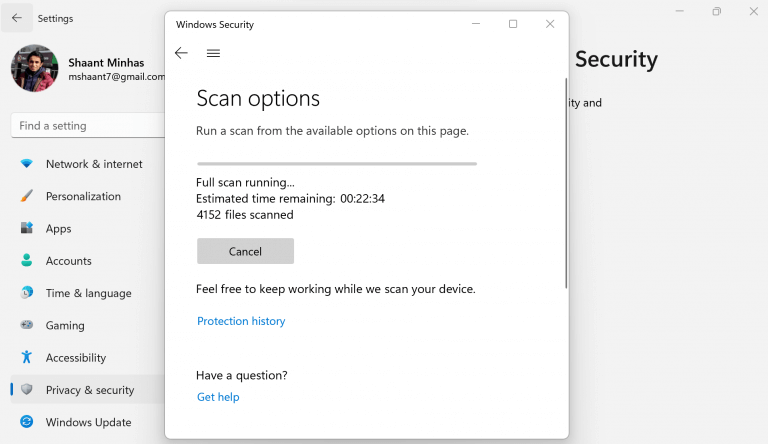
All about Windows Defender
And that’s all about Windows Defender, folks. Personally, I use and recommend Windows Defender over other expensive—and often bloated—third-party programs. Combine it with safe web usage practices, I’d figure you wouldn’t either. Whatever option you choose to go ahead with, be rest assured that with Windows Defender, you can have a free and reliable security option to fall back on.